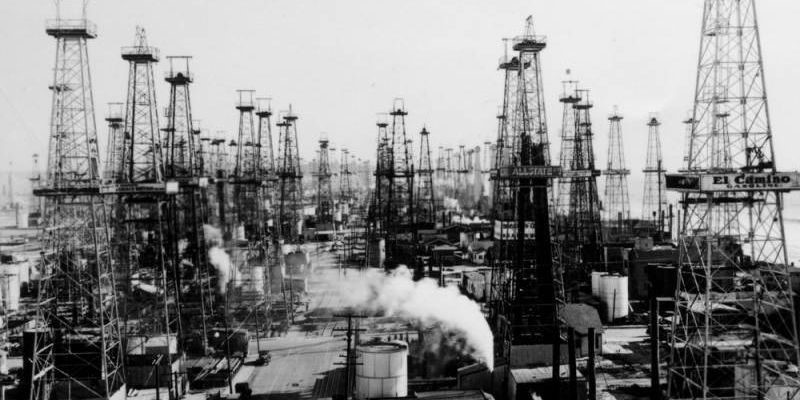Warning
This article and series is specifically targeted for anyone involved or interested in oil and gas reserves reporting guidelines, methods, issues, calculations and pitfalls. Proceed at your own risk!
Introduction
Undeveloped Reserves require the underlying project(s) to be commercial, regardless of the definitions employed. Evaluators often think first toward the economics of a project, which is very important and must be positive to qualify as reserves. But equally important is the approval of the project by the operator (and other material ownership) and the intent to proceed. When prices drop materially, 2020 being a significant example, questions regarding development plans and capital commitments come to the forefront. Its important to understand what is written in the reserve definitions and fully consider these issues prior to booking undeveloped reserves.
What are the SEC Rules for Development Plans?
To appreciate the full scope of the SEC rules on this subject, we must look at multiple parts of Regulation S-X. The definition of Undeveloped Reserves, Undrilled Locations states “only if a development plan has been adopted indicating that they are scheduled to be drilled within five years” (Reg S-X 210.4-10 (a)(31)(ii)). This is often referred to as the “five year rule”, but it also includes the requirement that “a development plan has been adopted.” The definition of Reserves states “there must be a reasonable expectation that there will exist, the . . . financing required to implement the project” (Reg S-X 210.4-10 (a)(26)). Finally, the definition of Proved Oil and Gas Reserves states that the reserves be “economically producible—from a given date forward, . . . under existing economic conditions”. This definition continues with, “The project to extract the hydrocarbons must have commenced or the operator must be reasonably certain that it will commence the project within a reasonable time” (Reg S-X 210.4-10 (a)(22)). These requirements can be summarized as:
- Approved – An adopted development plan
- Financed – Reasonable expectation that financing will be available
- Commitment – Reasonable certainty that project will commence
These requirements have been verified over the years since the 2009 rules modernization, through the SEC’s Comment Letter process. There have been many examples of companies receiving comments and questions regarding one or more of these facets of commerciality. This is particularly true in years where prices have dropped, and the SEC staff has more concern regarding commitment levels and ability to finance future projects. And just to reinforce a prior comment, the SEC expects the capital commitment to be based upon “existing economic conditions” and not be prefaced on the expectation of rising prices, lower costs, and/or future events that do not meet reasonable certainty standards.
For the reserve evaluators, the typical required documentation is an approved capital budget. In most cases, capital budgets are approved before year-end. For SEC reports, it is strongly suggested that the capital budget be approved PRIOR to year-end; otherwise you may be technically unable to book reserves at the effective date of December 31. This is particularly true for projects that are material within a given portfolio.
Common Issues with SEC Development Plans?
The most common issue with approved Development Plans is that Capital Budgets typically cover only the upcoming year. Approval processes vary by company and for some, this is all that exists. Other companies have a least notional budgets for longer periods of time. We’ve seen examples of 3-5 year notional budgets. While these may be more subject to change than the approved capital budget for next year, they can still be very important documentation in the case for reasonable certainty.
A more subtle issue is that future budgets are rarely if ever based on the SEC’s required current, flat price forecast. It is much more common for internal approvals to be based on internal price forecasts, somewhat related to the future strip prices. While the SEC definition for Proved Oil & Gas Reserves includes an economic producibility test “under existing economic conditions” (ie. SEC prices and historical costs) in the first sentence, the commitment to proceed requires only “reasonable certainty”. This has been interpreted to mean that the commitment to proceed does not technically need to be based on a flat pricing scenario – which makes the approved capital budget as valid as documentation of commitment.
HOWEVER, the reality with either notional budgets in years 2-5 or approved development plans based on escalated prices, even though these situations are allowed the SEC can still hold companies responsible for their failure to develop Undeveloped Reserves. When these situations exist and the prices don’t materialize in the future and/or the future capital budgets are strained, you can and likely will get some serious questions and possible restatement requests from the SEC. So, it’s important for evaluators and management to understand if their commitment or ability to proceed is dependent on higher commodity prices in the future.
For material projects within a portfolio, evaluators should consider getting written project approval should prices remain at SEC pricing levels. This process can be challenging and often involves building awareness within management. It is important, however, for management to appreciate the assumptions in the reserves for which they may be held accountable in the future. With year-end 2020 SEC prices pointing to $39.50/bbl and $1.90/MMBtu, this will be a very challenging year for budget projections… prepare to defend.
What are the rules for SPE/PRMS Development Plans?
The rules for Development Plans with the SPE/PRMS are largely similar to the SEC. The primary principles being Approval, Capital availability, and Commitment. The specific language is found in section 2.1.2 of the SPE/PRMS as follows (brief form, with emphasis added):
2.1.2 Determination of Commerciality
2.1.2.1 Discovered recoverable quantities (Contingent Resources) may be considered commercially mature, and thus attain Reserves classification, if the entity claiming commerciality has demonstrated a firm intention to proceed with development. This means the entity has satisfied the internal decision criteria (typically rate of return at or above the weighted average cost-of-capital or the hurdle rate). Commerciality is achieved with the entity’s commitment to the project and all of the following criteria:
B) Evidence of financial appropriations either being in place or having a high likelihood of being secured to implement the project.
C) Evidence to support a reasonable time-frame for development.
D) A reasonable assessment that the development projects will have positive economics and meet defined investment and operating criteria. This assessment is performed on the estimated entitlement forecast quantities and associated cash flow on which the investment decision is made.
The key difference here for SPE/PRMS versus SEC guidance is that the determination of economic producibility and the intent and ability to proceed are based on the same price forecast, thus potentially avoiding the issue where capital budgets are based on different price assumptions than the development plan approval processes.
Closing
In a year like no other, 2020 will present challenges to oil and gas companies in forecasting available capital for development projects. Low YE2020 SEC prices will severely impact commerciality of projects and the ability to justify a healthy level of development. “Reasonable certainty” can help you in some ways, but “existing economic conditions” may not. Document your assumptions and be prepared to defend your forecasts. We can help you with that, so feel free to reach out here or contact a CG&A professional at the links below. Thanks for reading!
Contact CG&A about Reserves: reserves@cgaus.com
Check Out Our Website: www.cgaus.com
Special thanks to @Jonathan Schmit, PE, @Jeffrey Wilson, PE and @Shelby Loskorn for their efforts in publishing this series.





